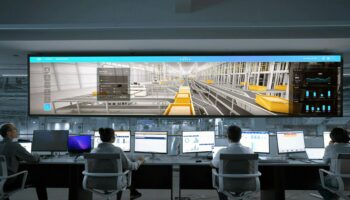Introduction:
Computers have undergone remarkable transformations over the decades. From the clunky behemoths of the past to the sleek, high-performance machines of today, the Journey of computing has been nothing short of awe-inspiring. In this article, we will delve into the fascinating world of old computers and new computers, comparing their evolution, performance capabilities, and the profound impact they have had on society.
The Evolution of Computing: A Historical Perspective
Old Computers: The Pioneers
The history of computing can be traced back to the early 20th century, with the birth of mechanical calculators and the advent of vacuum tube-based computers. Here are some notable milestones in the development of old computers:
ENIAC (1945):
Often regarded as the first general-purpose electronic computer, the Electronic Numerical Integrator and Computer (ENIAC) was a colossal machine that utilized over 17,000 vacuum tubes to perform calculations.
UNIVAC I (1951):
The UNIVAC I, short for Universal Automatic Computer, was the first commercially produced computer. It introduced magnetic tape storage use for various applications, including weather forecasting and census data analysis.
IBM 360 (1964):
The IBM 360 series marked a significant step forward in computer design, offering compatibility across a Range of models. This standardization was a critical development in the history of computing.
Personal Computers (1970s-1980s):
The 1970s saw the emergence of personal computers like the Altair 8800, Apple I, and IBM PC. These machines brought computing power to individuals and small businesses, laying the foundation for the PC revolution.
New Computers: The Digital Renaissance
The transition from old Computers to new Computers is marked by several Transformative shifts.
Microprocessors:
The development of microprocessors in the 1970s, most notably the Intel 4004, paved the way for the miniaturization of computing power. These tiny chips replaced the need for large, power-hungry vacuum tubes.
Graphical User Interfaces (GUIs):
Xerox PARC’s Alto computer, released in 1973, introduced the concept of GUIs, featuring icons, windows, and a mouse. Apple’s Macintosh and Microsoft’s Windows further popularized GUIs.
Internet and Networking:
The birth of the World Wide Web in 1991 revolutionized communication and information access. The internet has become an integral part of modern computing, connecting people globally.
Mobile Computing:
The introduction of smartphones and tablets in the 21st century brought computing to our fingertips. Devices like the iPhone and iPad revolutionized how we interact with technology.
Performance: Old vs. New
Old Computers: Limited Power
Old computers, by today’s standards, had extremely limited computational power. Some Key performance limitations of old computers include:
Processing Speed:
Old computers operated at clock Speeds measured in kilohertz (KHz) or megahertz (MHz). For example, the Commodore 64, a popular home computer from the 1980s, ran at 1 MHz.
Memory:
Memory capacities were minuscule compared to today’s standards. Early PCs had RAM measured in kilobytes (KB), while storage was typically limited to floppy disks with Capacities of a few hundred kilobytes or, later, megabytes (MB).
Graphics and Display:
Graphics capabilities were Basic, with limited color palettes and low-resolution displays. Gaming and multimedia experiences were rudimentary.
Connectivity:
Networking was virtually nonexistent for personal computers in the early days.
New Computers:
Unprecedented Power
The performance leap in new computers is nothing short of astounding:
Processing Speed:
Modern CPUs operate at gigahertz (GHz) clock speeds, enabling rapid data processing. High-end CPUs even reach into terahertz (THz) territory.
Memory:
Today’s computers boast RAM capacities measured in gigabytes (GB) or even terabytes (TB). Fast solid-state drives (SSDs) offer Large storage capacities with lightning-fast read and write speeds.
Graphics and Display:
Modern computers feature advanced graphics processing units (GPUs) that support complex 3D rendering, high-definition displays, and even 4K and 8K resolutions.
Connectivity:
The Internet has become an essential part of daily life, with high-speed broadband and wireless connectivity available nearly everywhere. Cloud computing and data sharing are commonplace.
Impact on Society and Industry
Old Computers: Laying the Foundation
Old computers played a pivotal role in shaping the modern world. They contributed to various industries and paved the way for the digital age:
Scientific Research:
Early computers were used for complex calculations in Fields like physics, chemistry, and engineering, accelerating scientific progress.
Business and Finance:
Mainframe computers transformed business operations, enabling large-scale data processing and financial modeling.
Military and Defense:
Computers were crucial for tasks like code-breaking, radar systems, and missile guidance during times of conflict.
Space Exploration:
NASA’s Apollo program relied on computers for navigation, calculations, and communication with astronauts.
New Computers: A Digital Revolution
The advent of new computers has ushered in a digital revolution with profound societal impacts:
Communication:
The internet has revolutionized communication, enabling real-time global connectivity through email, social media, and video conferencing.
E-commerce:
Online shopping has transformed the retail industry, offering convenience and a global Marketplace for consumers.
Entertainment:
Streaming services, video games, and digital media have reshaped how we entertain ourselves.
Education:
Online learning platforms have democratized education, providing access to knowledge and resources Worldwide.
Medicine:
High-performance computing enables advanced medical imaging, drug discovery, and genomic research, revolutionizing healthcare.
Artificial Intelligence:
AI and machine learning-powered by modern computers drive innovation in autonomous vehicles, robotics, and predictive analytics.
The Future: Continual Advancements
As we peer into the future, several exciting trends and possibilities emerge:
Quantum Computing:
Quantum computers, with their ability to perform complex Calculations at previously unimaginable speeds, could revolutionize fields like cryptography, materials science, and optimization.
AI and Machine Learning:
Advances in AI and machine learning will continue to enhance automation, data analysis, and decision-making in various sectors.
5G and Beyond:
The rollout of 5G networks and beyond will accelerate the development of IoT (Internet of Things) applications, Smart cities, and augmented reality experiences.
Green Computing:
Sustainable computing practices, including energy-efficient hardware and data center technologies, will become increasingly important to address environmental concerns.
Privacy and Security:
The need for robust cybersecurity measures and data privacy protection will grow as our digital footprint expands.
Conclusion:
In conclusion, the evolution of old computers into new computers has brought about transformative changes in society and industry. From humble beginnings as room-sized machines with limited capabilities to today’s portable powerhouses that fit in our pockets, computers have reshaped the way we live, work, and communicate. As we continue to push the boundaries of technology, the future promises even
- THE EVOLUTION OF PLASTIC SURGERY - 17 June 2024
- CHOOSE THE RIGHT PERSONAL INJURY LAW FIRM IN CHARLOTTE NORTH CAROLINA - 16 June 2024
- Email UX optimization, offering actionable insights - 16 June 2024






1 Comment